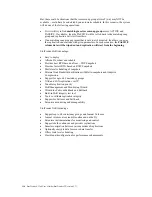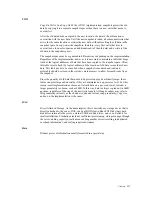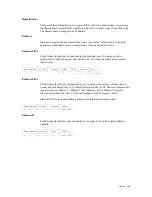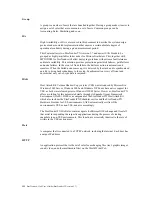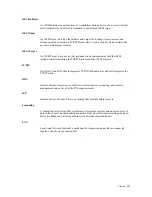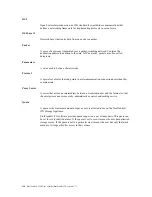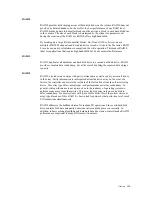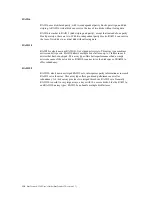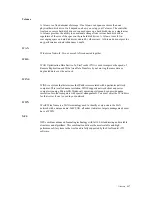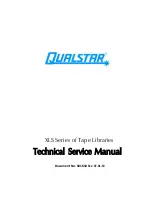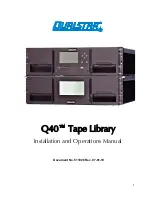
Glossary
329
RAID 0
RAID 0 provides disk striping across all hard disk drives in the volume. RAID 0 does not
provide any data redundancy, but does offer the best performance of any RAID level.
RAID 0 breaks up data into smaller blocks and then writes a block to each hard disk drive
in the volume. The size of each block is determined by the stripe size parameter, set
during the creation of the RAID set. RAID 0 offers high bandwidth.
By breaking up a large file into smaller blocks,
StorTrends® iTX software
can use
multiple IDE/SCSI channels and hard disk drives to read or write to the file faster. RAID
0 involves no parity calculations to complicate the write operation. This makes RAID 0
ideal for applications that require high bandwidth but do not require fault tolerance.
RAID 1
RAID 1 duplicates all data from one hard disk drive to a second hard disk drive. RAID 1
provides complete data redundancy, but at the cost of doubling the required data storage
capacity.
RAID 5
RAID 5, also known as a stripe with parity, stripes data as well as parity across all drives
in the array. Parity information is interspersed across the drive array. In the event of a
failure, the controller can restore the lost data of the failed drive from the other surviving
drives. This array type offers exceptional read performance as well as redundancy. In
general, write performance is not an issue due to the tendency of operating systems to
perform many more reads than writes. This array type requires only one extra disk to
offer redundancy. For most systems with four or more disks, this is the correct choice as
array type. Because of this, RAID 5 is best suited for networks that perform a lot of small
I/O transactions simultaneously.
RAID 5 addresses the bottleneck issue for random I/O operations. Since each hard disk
drive contains both data and parity numerous writes can take place concurrently. In
addition, robust caching algorithms and hardware based exclusive-or assist make RAID 5
performance exceptional in many different environments.
Summary of Contents for ManageTrends 2.7
Page 18: ...StorTrends 1300 User s Guide StorTrends iTX version 2 7 xviii...
Page 24: ...StorTrends 1300 User s Guide StorTrends iTX version 2 7 6...
Page 33: ...Chapter Two Chassis Set Up 15 Accessing the Inside of the System...
Page 60: ...StorTrends 1300 User s Guide StorTrends iTX version 2 7 42...
Page 64: ...StorTrends 1300 User s Guide StorTrends iTX version 2 7 46...
Page 70: ...StorTrends 1300 User s Guide StorTrends iTX version 2 7 52...
Page 100: ...StorTrends 1300 User s Guide StorTrends iTX version 2 7 82...
Page 106: ...StorTrends 1300 User s Guide StorTrends iTX version 2 7 88 Control Panel...
Page 236: ...StorTrends 1300 User s Guide StorTrends iTX version 2 7 218...
Page 256: ...StorTrends 1300 User s Guide StorTrends iTX version 2 7 238...
Page 277: ...Appendix E Replication Overview 259 Snap Assisted Replication Navigating with ManageTrends...
Page 281: ...Appendix E Replication Overview 263 Replication SAR view Primary Box SAR view Secondary Box...
Page 285: ...Appendix E Replication Overview 267 After Failover Operation in Secondary Box...
Page 300: ...StorTrends 1300 User s Guide StorTrends iTX version 2 7 282...
Page 308: ...StorTrends 1300 User s Guide StorTrends iTX version 2 7 290...
Page 330: ...StorTrends 1300 User s Guide StorTrends iTX version 2 7 312...
Page 356: ...StorTrends 1300 User s Guide StorTrends iTX version 2 7 338...


